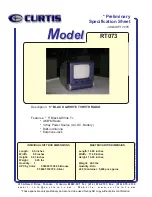
119
8
89
63
17
•
8
89
631
8
•
8
89
63
19
EN
effect of vibrations during the operation of the generator,
the insulation on the cable may be rubbed away, which
would send voltage to the frame of the generator and
could result in a fire. We recommend connecting the
cables together using a plastic zip tie and to connect this
to the metal battery clamp using plastic zip ties; in the
case of model 8896317 at least connect the cables toge-
ther to prevent the snagging and damage of loose cables.
V. Before putting
the generator
into operation
y
The tasks necessary for starting up the generator are
described in the chapter Starting the generator in the
first part of the user's manual, however, also adhere to
the following instructions.
•
WARNING
y
The generator must not be operated in enc-
losed or poorly ventilated areas or in environ-
ments (e.g. in rooms, deeper outdoor trenches,
etc.) since the exhaust fumes are toxic and may
lead to poisoning of people or animals. The generator may
only be operated in indoor areas under the condition that
this is authorised by by respective government authorities
to ensure that health protection regulations are met.
y
The generator must not be operated at an incline of
more than 10° relative to the horizontal plane, since at
a greater incline the lubrication system is insufficient
and this causes serious damage to the engine.
FILLING UP AND CHECKING OIL
y
Filling the oil pan with motor oil and checking the oil
level in the crankcase must be performed with the
generator being horizontally level. Check the oil level at
least 10 minutes after the engine has been turned off to
enable all the oil to flow off the walls of the crankcase.
•
WARNING
y
When handing oil, use suitable water-resistant protecti-
ve gloves because oil is absorbed through the skin and
is damaging to health.
FILLING UP WITH PETROL
y
Always pour fuel into the tank through the strainer that
is inserted in the fuel tank opening.
This will remove any potential mechanical particles con-
tained in the petrol, which could clog the fuel system.
y
Petrol is highly flammable and very
volatile. Petrol or its fumes may very
easily ignite, and therefore do not
smoke when handling petrol and pre-
vent access to any flame or spark sources. Do not pour pet-
rol into the fuel tank while the engine is running and turn
off the engine of the generator and allow it to cool down
before adding petrol!
y
Petrol is damaging to health. Therefore, prevent petrol from
coming into contact with skin, breathing in its vapours and
ingesting it. When handling petrol, use protective aids, i.e.
waterproof gloves as well as safety glasses.
Petrol is absorbed through the skin into the
body. Only add petrol in well-ventilated envi-
ronments to prevent inhalation of fumes.
CHECKING THE CONDITION OF THE AIR FILTER
y
Check the air filter for clogging and its condition every
time before putting the generator into operation (the
inspection and maintenance plan is provided in chapter
Cleaning and maintenance). Remove the air filter cover
(fig. 9a), remove the filter (fig. 9b) and inspect its con-
dition, i.e. check whether it is clogged, damaged, etc.
Clean the filter after every 50 motor hours and in the
event of operation in dusty environment after every
10 motor hours or more frequently according to the
instructions further provided in chapter Cleaning
and maintenance.
In the event of significant clogging or
wear and tear, replace it with a new original filter (the part
number of the air filter for the given generator model is
provided in table 1). A clogged air filter or operation of the
generator without the air filter will result in damage to the
carburettor and the engine. A clogged air filter prevents
the supply of a sufficient amount of combustion air to the
engine and leads to the carbonisation of the engine, spark
plug and exhaust pipe.
The generator must not be ope-
rated without an air filter or without an original air
filter from the manufacturer, which has the necessary
porosity and filtration effectiveness that is necessary
for the proper operation of the engine.
GAS SUPPLY TO THE GENERATOR
y
The source of gaseous propane-butane is standard propa-
ne-butane pressure vessels used for powering, for exam-
ple, gas stoves with a standard pressure regulator designed
for this type of pressure vessel, e.g.
HERON® 8898300 - see chapter Starting
the generator in the front part of the
user's manual. The source of natural gas
is the gas mains distribution system.
The connection to the natural gas (or
propane-butane) mains distribution sys-
tem may, due to safety reasons, only be
performed by an authorised person that
must also perform an audit of the instal-
led connection. The requirements for
the maximum usable pressure and flow
rate of the supplied gas are specified in
chapter II. Technical specifications or in
chapter Starting the generator. The connection of the
generator to a mains gas distribution system (pipes) must
meet the requirements of the current wording of the
Technical guideline TPG G 800 03 with the title "Connecting
gas-powered equipment an its commissioning". The hoses
supplying propane-butane or natural gas from internal gas
systems (gas pipes) in buildings to the generator must meet
the norms EN 14800 or EN 1762 as specified in art. 5.7 of
norm EN 1775, which set the requirements for the hoses for
supplying gas from indoor gas distribution systems in buil-
















































